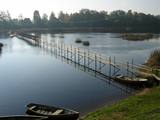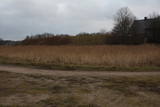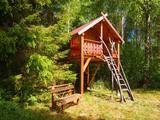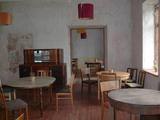| Nr | Name | Beschreibung |
|---|---|---|
|
The farm specializes on growing and reprocessing cranberries and blueberries. They offer tastings of the products and purchasing those in a small local shop, as well as a 2-hour-long excursion around the farm. |
||
|
Saaremaa, kas no igauņu valodas tulkojumā nozīmē "salu zeme" ir kā neizskaidrojams magnēts, kas ik vasaru pievelk ne tikai daudzus Latvijas, bet arī ārvalstu ceļotājus. Neparastais ar salām izraibinātais un zilais jūras klajs, savdabīgās kadiķu pļavas - alvāri, seni, neredzētas formas Dievnami, Baltijas tautām nozīmīgi vēstures pieminekļi - pilskalni, pils, nepieredzēta sugu, īpaši - putnu bagātība, vējdzirnavas, Eiropas iespaidīgākais meteorīta krāteris, senie zvejnieku ciemi ar salenieku parašām un īpatnībām - tās ir tikai dažas salas iezīmes. Salas galvaspilsēta - Kuressaare ir viena no skaistākajām Igaunijas mazpilsētām ar senu rātsnamu un rātslaukumu un vienu no iespaidīgākajām viduslaiku pilīm Baltijā, kurai pēc izskata nav līdzīgu. Kuressaare vērts pasēdēt kādā no pilsētas krodziņiem. Saaremaa salā ceļotāji tiek gaidīti vienmēr, par ko liecina labi pārdomātā un kvalitatīvā tūrisma infrastruktūra. Sala ir īsta paradīze ne tikai mierīgas atpūtas meklētājiem, bet arī visa veida aktīvās atpūtas piekritējiem - kājāmgājējiem, velobraucējiem, jūras viļņu vagotājiem un dabas vērotājiem! |
||
|
Biedrība "Latvijas Slieku audzētāju asociācija" tika nodibināta 2010. gada 1.septembrī ar mērķi attīstīt sliekkopību un vermikomposta ražošanu Latvijā. Pamatnodarbošanās - vermikomposta ražošana. |
||
|
Der Hof Vāldamō ist ein Wohnhaus mit einer gelblichen Färbung und einer natürlichen Dachdeckung, das am Anfang des 20. Jhs. als eine neue Wirtschaft gebaut wurde. Der Hof Virgo ist die nächste (nördlich) Wirtschaft hinter Vāldamō. Diese Wirtschaft wurde in den 1920er Jahren als eine neue Wirtschaft gebaut. Das Wohnhaus (1930) hat interessante Holzschnitzereien. Der Hof Fīlmaņi ist die nächste Wirtschaft (nördlich) hinter Virgo. Das altertümlich aussehende Haus wurde am Anfang des 20. Jhs. als ein Kleinzimmer gebaut. Den Hof Silkalni können wir finden, indem wir an der Kreuzung nach rechts – Richtung Pitrags – abbiegen. Der Hof ist ein Gebäude mit gelblicher Färbung, das um das Jahr 1906 als ein Kleinzimmer gebaut wurde. Der Hof Norpiedagi befindet sich südlich hinter dem Hof Silkalni. Das Haus hat braune Färbung und ist größer als das Haus des vorigen Hofes. Das Wohnhaus wurde um das Jahr 1906 als eine Kleinzimmer-Kornkammer von dem aktiven livischen gesellschaftlichen Mitarbeiter und dem Bootsbauer Didriķis Volganskis (1884 – 1968) gebaut. Im Jahr 1912 wurde hier sein Sohn Edgars Valgamā geboren, der auch ein livischer Kulturmitarbeiter war und in Finnland als Pfarrer gearbeitet hat. Der Hof Anduļi befindet sich an der vorher erwähnten Kreuzung, dieser Hof ist eine der größten Altwirtschaften und auch der älteste Hof des Dorfes, dessen Geschichte seit dem Jahr 1680 bekannt ist, als dieser Hof Kūkiņi genannt wurde. Zu dem Hof gehören das Wohnhaus (ungefähr 1909), die Getreidedarre (1905), die Kornkammer (Mitte des 19. Jhs.) und das Rauchhaus, das von einem durchsägten Boot gebaut worden ist. Unter der Getreidedarre von Anduļi, die auf einer Düne gebaut worden ist, befinden sich der mittelalterliche – der sogenannte Pestfriedhof. Der nächste ist der Hof Žoki, der sich gegenüber Anduļi und auf der anderen Seite des Weges befindet. Das heutige Haus ist auf den Fundamenten der historischen Altwirtschaft gebaut worden. In der Mitte des 19. Jhs. befand sich im Haus Žoki die erste Schule, in der den livischen Kindern das Lesen in den damaligen Küstendörfern von Dundaga beigebracht wurde. In dieser Schule arbeitete der Live Nika Polmanis (1823 – 1903). Der Hof Tilmači ist die nächste (nördlich) Wirtschaft hinter dem Hof Žoki. Hier haben sich mehrere Häuser erhalten, die in der Jahrhundertwende 19. – 20. Jh. gebaut worden sind: Das bräunlich gefärbte Wohnhaus, der Pferdestall und ein Teil der Kornkammer. Bei der Durchführung der Restaurationsarbeiten des Wohnhauses hat der Inhaber ein Brett mit der Aufschrift „1825. Gouvernement Kurland" gefunden. Die obengenannten sieben historischen Wirtschaften und Häuser waren vor einiger Zeit auch Kandidaten auf der Liste des UNESCO-Weltkulturerbes. |
||
|
Das unterirdische Museum ist die spannendste Attraktion im Grubenpark-Museum von Kohtla. Machen sie eine unvergessliche Tour durch die unterirdischen Arbeitsplätze der Grubenarbeiter, besuchen sie das Sprengstofflager, fähren sie mit dem echten Bergbau-Zug und erfahren sie mehr über Bergbautechnologie. In der unterirdischen Kantine haben sie die Möglichkeit ein echtes Grubenarbeiter-Dinner zu geniessen. |
||
|
Das Dorf liegt auf beiden Seiten des Flusses Irbe (Dižirve, Īra) an der Mündung des Flusses in die Ostsee („Meeresseite“ und „Landseite“). Die Irbe wurde zum ersten Mal 1310 in einem Grenzvertrag zwischen dem Kurländischen Bischof und dem Rigaer Domkapitel erwähnt, der Name Lielirbe (Irvemünde) erschien zum ersten Mal 1387 in einem Dokument des Schiedsgerichts. Ende des 19. Jh. war der kleine Hafen von Lielirbe ein aktives Holzhandel- und Verkehrszentrum. Ende des 19. Jh. und Anfang des 20. Jh. wurde hier die größte Anzahl von Segelschiffen unter den Dörfern der kurländischen Westküste gebaut. 1939 gab es im Dorf ca. 300 Einwohner, mehr als 70 Häuser und eine Baptistenkirche (jetzt im Freilichtmuseum von Ventspils). Durch das Dorf verlief eine Schmalspurbahn, es gab ein Post- und Telegrafenamt, zwei Lebensmittelgeschäfte, eine Grundschule der ersten Stufe, Chor und Blaskapelle. Lielirbe war eines der größten Dörfer, die nach dem Zweiten Weltkrieg verschwanden. In Lielirbe wurde die Kulturhistorikerin Valda Marija Šuvcāne (1923–2007) geboren, deren Arbeit durch ihre Tochter Baiba Šuvcāne fortgesetzt wird, die wichtige Werke über das Leben an der Livischen Küste schreibt. Bis 2019 ist geplant, die Seilbrücke über den Fluss Irbe erneut zu errichten. |
||
|
The cafe is situated in the guest house Zitari on the first floor, in the town of Roja, alongside the road, 500 m away from the sea. |
||
|
Одно из сравнительно редких мест, где на побережье можно понаблюдать за рыбаками в работе. Ветряная мельница «Клаюми» (1930 г.) является одним из самых высоких сельских строений. Рядом с мельницей находится Юрмалциемский Туристический информационный пункт, информационный стенд и место для отдыха.Здесь же видны старые деревянные корпуса барж, брошенных рыбаками. Экспозиция«Старинные предметы жителей Юрмалциемса» находится в восточной части поселка, где в деревянном сарае представлены собранные местными энтузиастами предметы быта и орудия труда окрестных жителей. |
||
|
Die Flüsse Salaca und Svētupe sind zu den einzigen Orten auf der Welt ernannt, wo man beim industriellen Fischfang der Neunaugen immer noch eine mehr als 150 Jahre alte Methode benutzt: den Fischzaun (einen über den Fluss gebauten Steg mit Fischreusen, insgesamt drei Fischzäune). Unter der Leitung der örtlichen Fischer kann man die Fischzäune besichtigen, den Fischfang beobachten und Vorort gegrillte Neunaugen probieren. |
||
|
Bis zum 80er Jahre des 17 Jahrhunderts befindete sich an dem Ort der heutigen Skanstnieki im Wohnkomplex von Vecdaugava das Schloss von Daugavgrīva. Wegen der natürlichen Änderungen am Flussbett von Daugava (früher floß der Fluss Daugava das Flussbett Vecdaugava entlang) wurde das Schloss niedergerissen und am Linken Ufer des Flusses Daugava „hinübergesetzt”. Das Schloss ist völlig ruiniert, dennoch die alte Schutzwälle und Schutzgraben erhalten geblieben sind. Diese haben die Soldaten der schwedischen Armee als Niederlassungsplatzt am Anfang des Nordischen Krieges genutzt. Auf jedem Fall ist dieser Ort ein sehr interessantes historisches Objekt und ein Objekt der militärischen Nachlass in Riga. Es lohnt sich, das Objekt zu besichtigen, wenn mal den nördlichen Teil der Stadt besucht.
|
||
|
Der Botanische Garten wurde etwa 1923 begründet, als Zentrum der Botanik in Litauen. Der Garten hat eine Fläche von über 60 ha, wovon etwa 30 ha von der öffentlich zugänglichen Ausstellung eingenommen werden. |
||
|
Es gibt Zeugnisse, dass die erste Mühle hier gleichzeitig mit der Burg im 13.Jh. erbaut wurde. Zur Zeit Herzog Jakobs wurde in der Mühle Schießpulver hergestellt. Später war sie der erste Ort in Kurland, in dem Papier hergestellt wurde. Seine jetzige Gestalt erlangte das Gebäude im 19. Jh. In der Sowjetzeit befand sich hier eine Metalverabeitungswerkstatt. |
||
|
Im schönen Café Luke, das im Gärtnerhaus im Park des Landguts eingerichtet wurde, können die Gäste im Sommer leckere örtliche Speisen verzehren. Im Alltag wird eine einfachere Speisekarte mit den örtlichen Produkten angeboten. Die festliche Speisekarte dagegen ist reich an Auswahl, man kann darin geeignete Varianten sowohl für kleine Gruppenfeste als auch für reiche Festtagstische finden. |
||
|
Маршрут ведет вдоль обоих берегов судьбоносной реки латышей – Даугавы. В маршрут включены такие значимые места, как развалины Кокнесского замка и создаваемый «Сад Судьбы». Путешественников порадуют как чудесные виды на речные ландшафты, так и древние городища, латгальские гончарные традиции и другие мастера ремесел. Даугавпилс с предложением многообразного военно-индустриального наследия и художественным центром знаменитого художника Марка Ротко. Информация о маршруте от Latvijas Lauku forums |
||
|
Der Hausherr ist Saunameister, Masseur, Kräuterkundiger und Reiki-Meister, interessiert sich für Ethnokultur und bietet den Gästen von den Vorfahren getestete und überlieferte Erholung und Gesundheitsvorsorge in der Sauna, Saunakurse, Geheimnisse der Kräuter, Wiederherstellung der Bande zur Natur, Wasservergnügungen. |
||
|
Die Geschichte des Gutshofes reicht bis zum 19. Jahrhundert zurück. Heute befindet sich im Gutshof eine Gaststätte, wo die nationale Küche im Ehren gehalten wird und den Gästen einfache und leckere Speisen aus lokalen Rohstoffen zu fairen Preisen anbietet. Das Menü des jeweiligen Tages finden sie auf der Homepage. Erwartet werden sowohl Durchreisende als auch Gruppen. |
||
|
Piemājas zoodārzs "Brieži" atrodas netālu no Rīgas. Šeit sastopami daudzi un dažādi dekoratīvie putni, tītari, pīles, fazāni, pāvi un žagata, starp tiem dzīvo jūrascūciņas un truši. No četrkājainajiem draugiem te var sastapt Holandes pundurkaziņas, Haidšnukes aitas, Šetlandes ponijus, ēzeļu ģimeni, vāverēnus un jenotpuiku Bārniju. Zoodārzu palīdz sargāt zosu bariņš un Peruāņu pundursivēns - Pigis. No 2015. gada Briežos dzīvo arī dambrieži un briedis Munžaks. Pēc pastaigas zoodārzā, iepriekš piesakot, iespējams izmantot piknika vietas un bērnu rotaļu laukumus. |
||
|
Atrodas pie tilta (Akadēmijas iela 1) pār Lielupi. 1574. g. pēc Kurzemes – Zemgales hercoga Gotharda Ketlera pavēles uzsāk jaunas baznīcas celtniecību. Dievnama tornis tapa laikā no 1686. g. – 1688. g., bet 1862. g. to paaugstināja līdz 80,5 m. Baznīca nodega padomju aviācijas uzlidojuma laikā 1944. g. 27. jūlijā. 1954. g. Padomju armijas sapieri uzspridzināja ēkas atliekas. 2009. g. sākās baznīcas torņa rekonstrukcija un šobrīd tajā izveidots izcils interaktīvais muzejs (īpaši draudzīgs bērniem) un stiklota skatu platforma. |
||
|
Zemnieku saimniecības "Imantas" galvenais darbības virziens ir olu ražošana. Te iespējams apskatīt lauku saimniecībā dzīvojošos dzīvniekus un dažādu šķirņu vistas, uzzinot kaut ko jaunu vai sen piemirstu par vistām un olām. Piedāvā arī iegādāties lauku olas. |
||
|
The tower is on the western shore of the lake, next to the dam and the Zvidze canal. From here you will see the overgrowth north-western part of the lake, Akmeņsala Island, and a wide area of open water. The third is on the southern shore of the lake, by the dam and the Īdeņa canal. Here you will find typical views of wetlands – areas of reeds, shrubbery, wet meadows and the overgrown lake. |
||


























